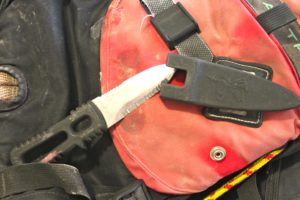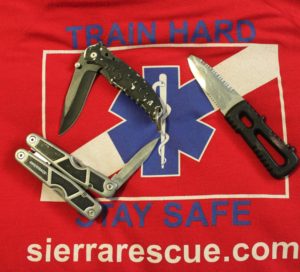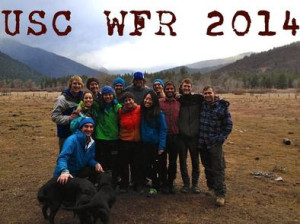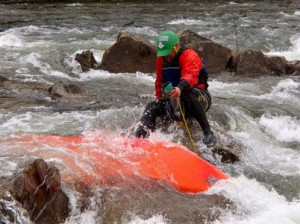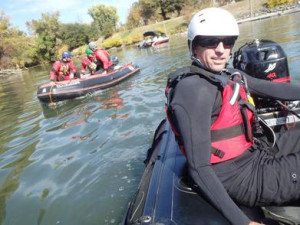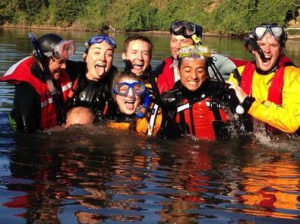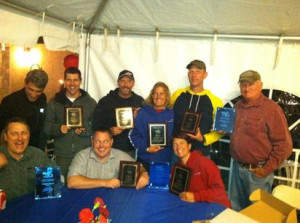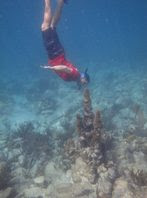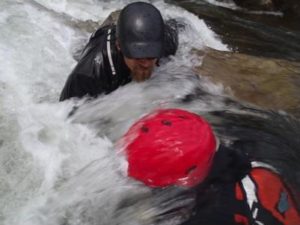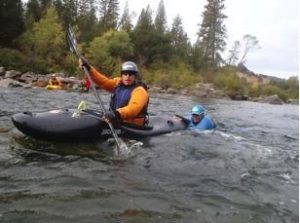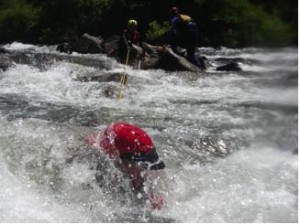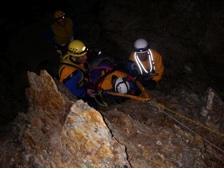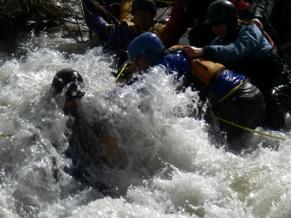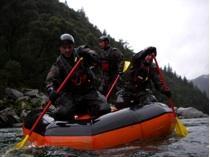One of the most common questions I get, as a rescue instructor is: “What should I take with me on the water?”
This can be a very difficult question to answer on paper because I like my students to learn through the course of our weekend exactly what they need, but there are some fundamentals that should be covered.
Throw Bag – a good rule of thumb is one throw bag per boat. The type of boat you paddle often dictates what size rope you use in your throw bag; rafts carrying the larger diameter rope in longer lengths and kayakers carrying shorter thinner line to save space. What is important to note about your throw bag is if you plan to use it as a haul line for mechanical advantage your brake prussic must be 2/3 or less the diameter of your haul line.
Haul line – If a boat gets wrapped you need a line to encourage the movement needed to get it off the rock. This becomes very boat specific as kayaks can often use much smaller diameter rope as there is less water pressure on the smaller rigid hull. Rafts have been pulled off rocks using throw bags but I recommend especially for multiday trips having 150-200 feet of 3/8-inch static line.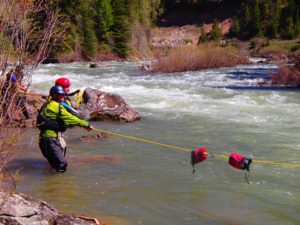
Carabiners – These tools make rope attachment a breeze, how many do you need? For kayakers 2 per person is great, for rafters 3-4 per boat. They must be locking carabiners, as unintentional clip-ins can be a very bad thing.
Prusik – To setup an efficient MA system you will need at least 2 prussic. You can loop 2 short prussic and wear them around your waist or easily fit them in your lifejacket. 1-2 sets of prussic per group should be the norm. Most important is that your prussic line is 2/3rd or less the diameter of your haul line!
Pulleys – Again following in the goal of efficient work the minimum of 1 prussic minding pulleys will make your life and rescue easier. One per person in Kayaks is great and 2 per raft are ideal.
Knife – A good sharp river knife is important not only to cut tomatoes at lunch but could potentially save your life if you are bound in a rope in the water. We do not use our knives to cut people out of pinned kayaks! We do use them as a last resort to cut a rope if absolutely needed.
Webbing – Lastly and most often overlooked is webbing. Depending on your river corridor anchors may be bountiful or hard to find but having enough webbing can overcome many obstacles. I recommend 30ft per person kayakers and 80 feet per raft. You can cut it how you like; I shoot for 15-20 feet per sling.
Is this a lot of gear? It depends on if you need it or not. I can fit an entire wrap kit with a haul line in a container the same size as a 12 pack of beer, so what is more important on that 5 day trip, beers or being able to get your raft off that rock?
This is by no means an exhaustive list of what you need on the water, each group, each river, and each skill set dictates different equipment this is just some general guidelines I have found helpful for rafters and kayakers.

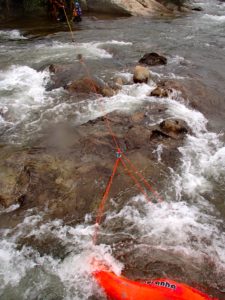
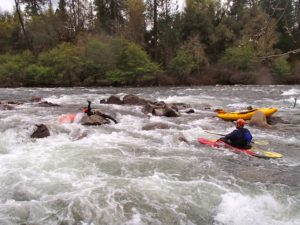
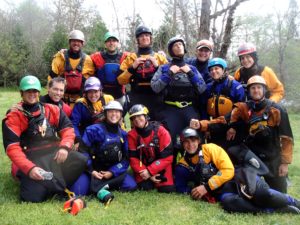
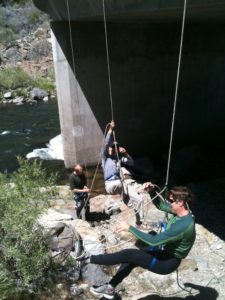

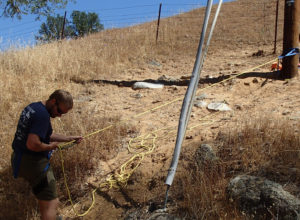
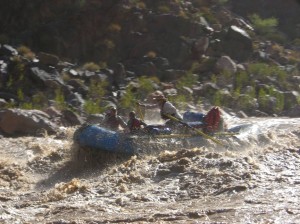
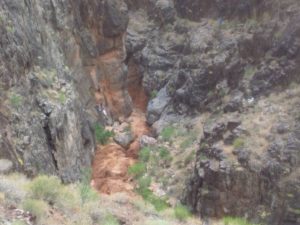
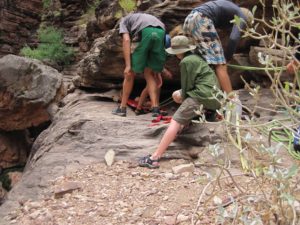
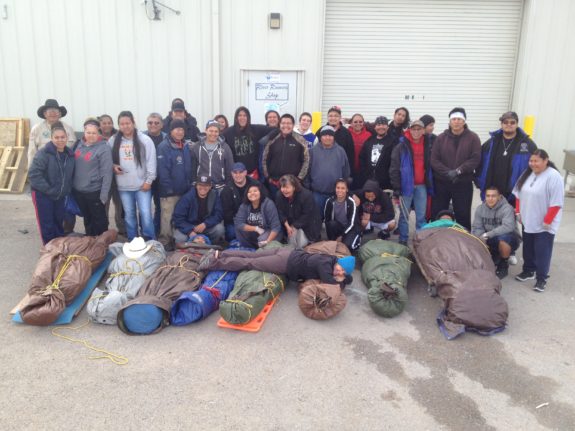
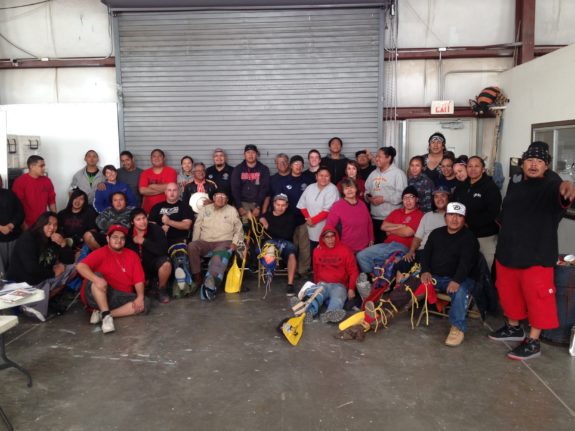
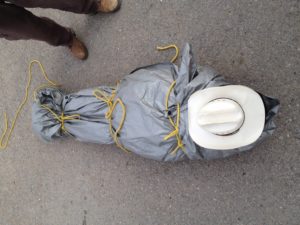
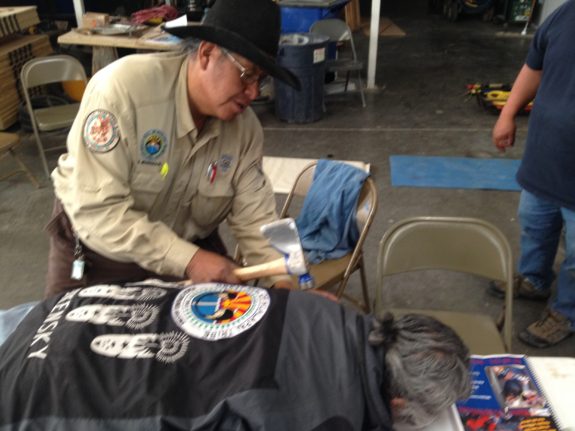
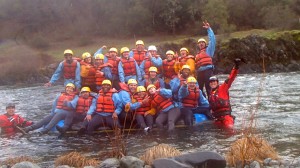
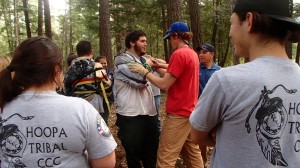
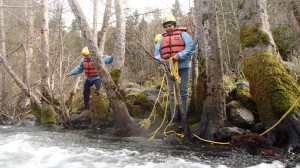
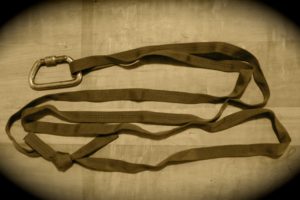
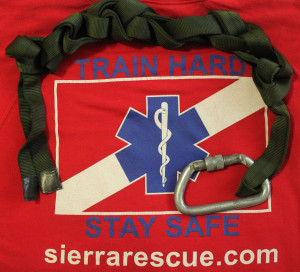
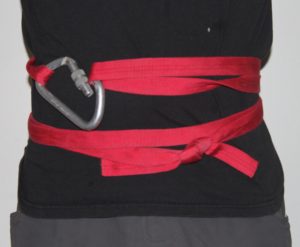
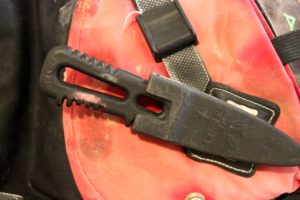 In our newly developed RRC-professional curriculum, one of the new ‘skills’ adapted from the Kiwi rescue realm centers on getting to and using a knife to self rescue under stressful conditions. The drill involves putting your foot in a loop of rope, and lowering into the current. Once “entrapped,’ you have to reach your knife and cut your foot free. Don’t worry we wont have you cut yourself free of a raft floor, but as extreme as it sounds, doing exactly that should be considered as an option if someone is heads down under a pinned / wrapped raft. Remember it’s all about airway airway airway.
In our newly developed RRC-professional curriculum, one of the new ‘skills’ adapted from the Kiwi rescue realm centers on getting to and using a knife to self rescue under stressful conditions. The drill involves putting your foot in a loop of rope, and lowering into the current. Once “entrapped,’ you have to reach your knife and cut your foot free. Don’t worry we wont have you cut yourself free of a raft floor, but as extreme as it sounds, doing exactly that should be considered as an option if someone is heads down under a pinned / wrapped raft. Remember it’s all about airway airway airway.